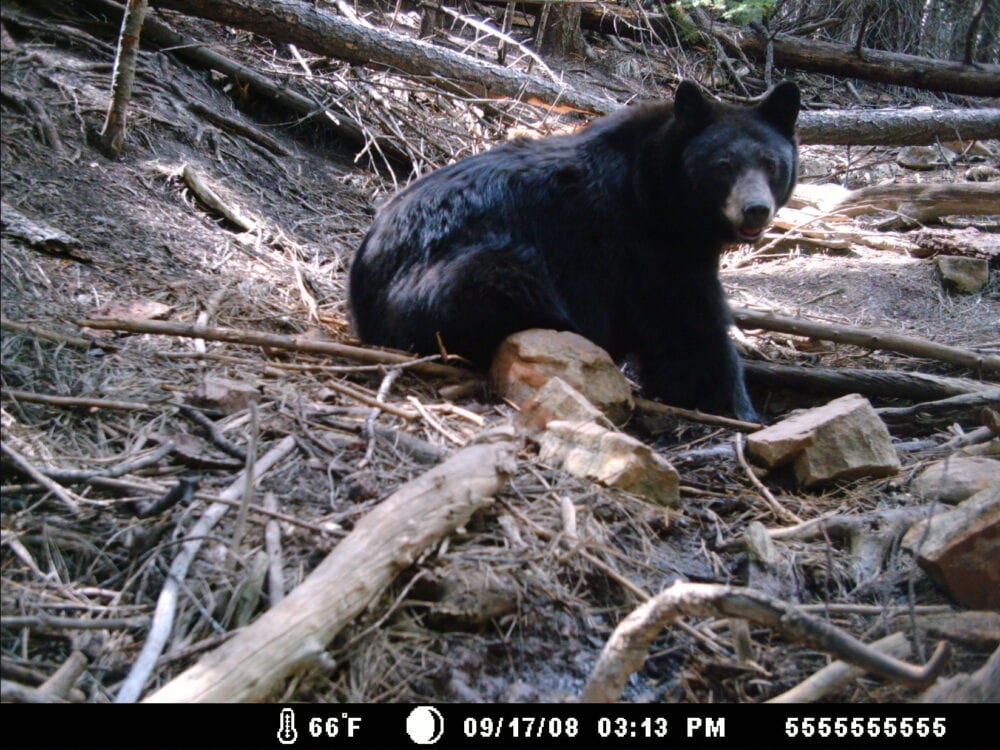
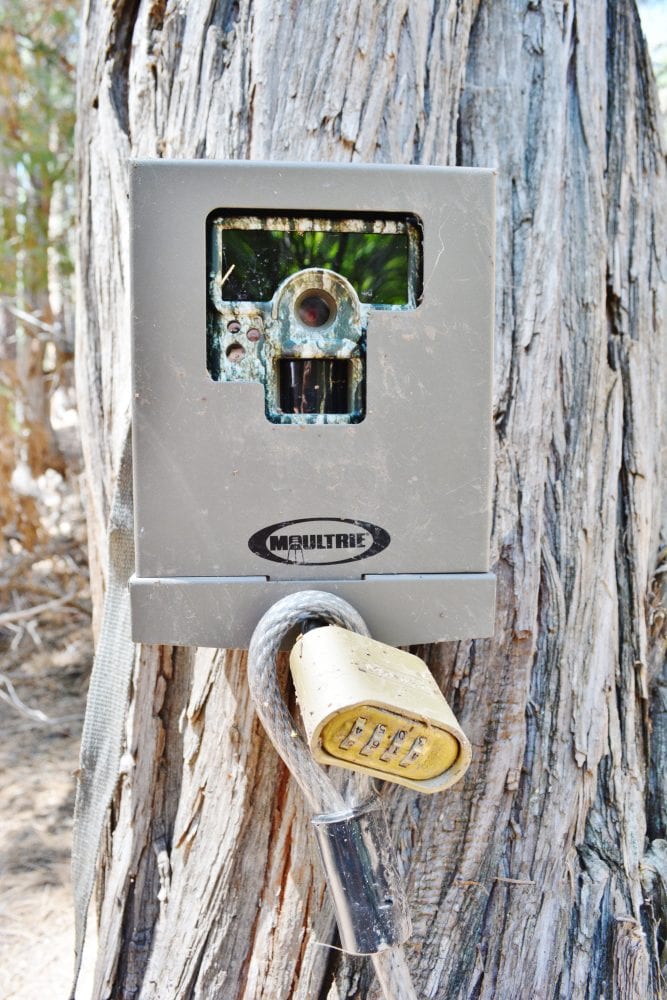
By Fiana Shapiro, Environmental Educator at the Sandia Mountain Natural History Center
Here at the Sandia Mountain Natural History Center, located in the mountains east of Albuquerque, we’ve been tracking bear visits for 12 years! We’ve recorded animal visits at two nearby springs, called Mud and Paradise, by stationing game cameras at both locations all year long. Both springs are located within the Cibola National Forest.
These cameras are motion and heat sensing, so they automatically snap photos of the animals that move in front of them. Let’s take a look at what we’ve learned about our resident black bears through this project!
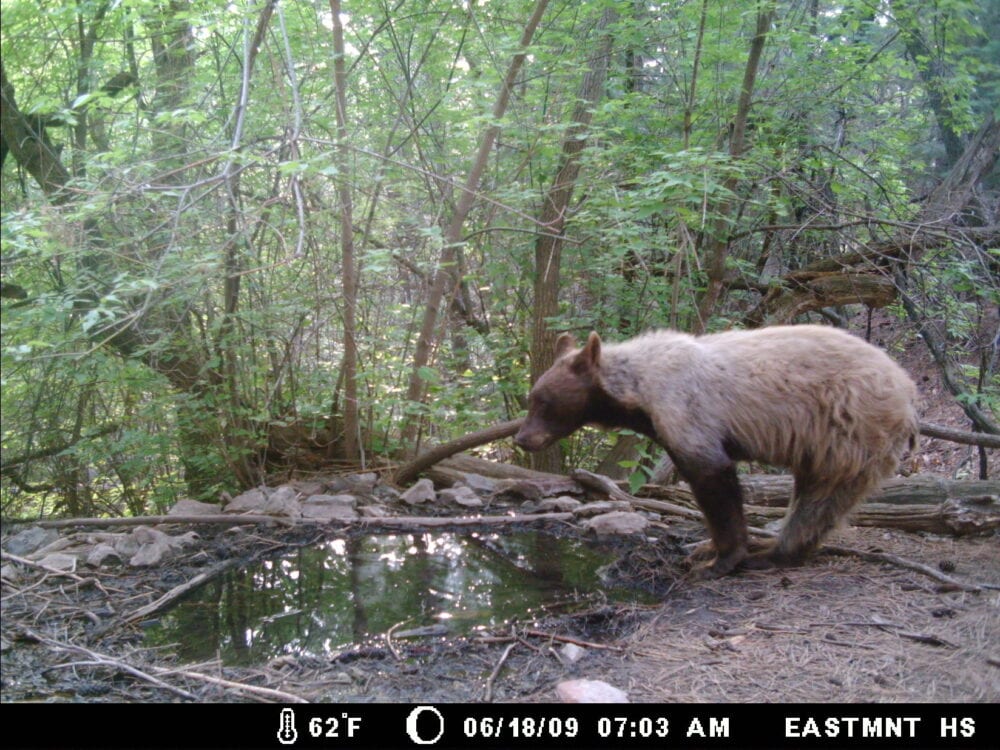
Paradise Spring dried up when the groundwater that filled it in dropped underground. Looking at these graphs, can you tell when that happened?

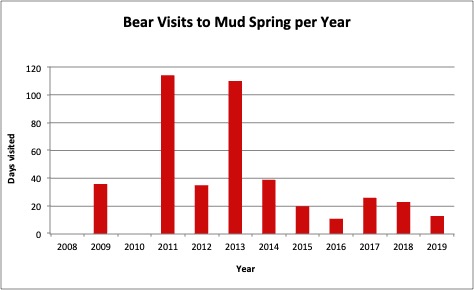
In late 2011 and into the spring of 2012, this spring was drying up. This has happened to many springs in the Sandia Mountains, often due to years of less snowpack higher on the mountain. In the spring, any snow up high that melts trickles slowly down into the groundwater and moves down the mountain.
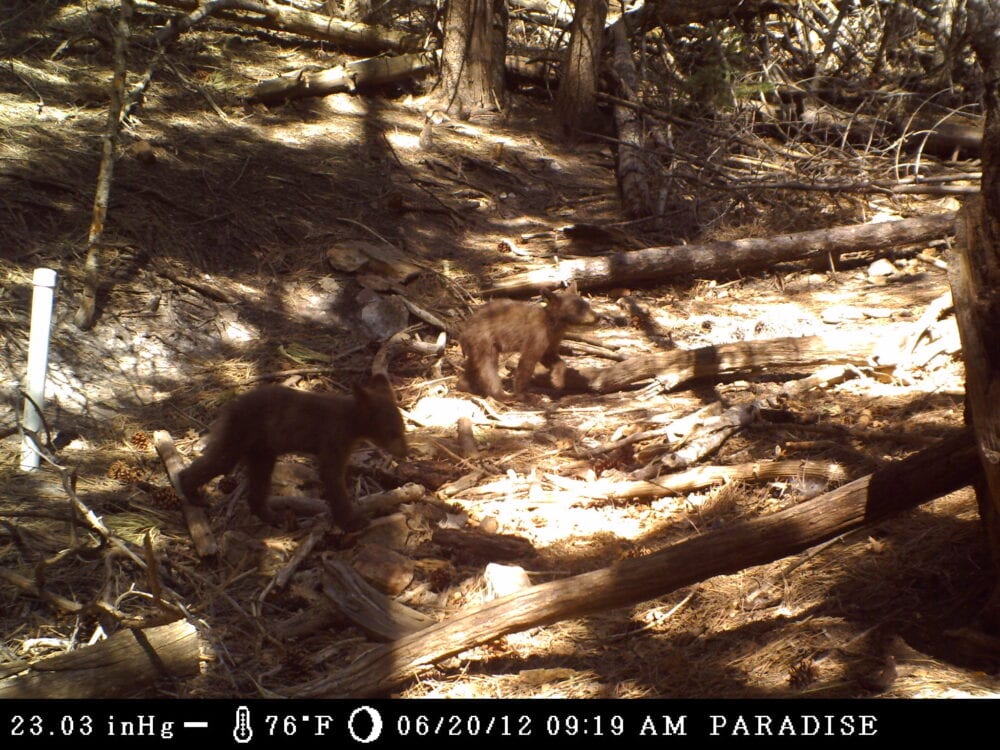

Luckily for now, Mud Spring is still filled in by groundwater, so bears can keep coming back throughout the spring, summer, and fall each year. As you can see in this graph, their favorite month to visit is June, followed by July. I bet you drink more water in the hot summer months, too!
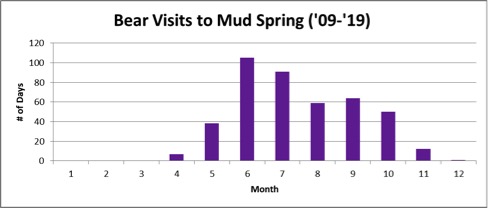
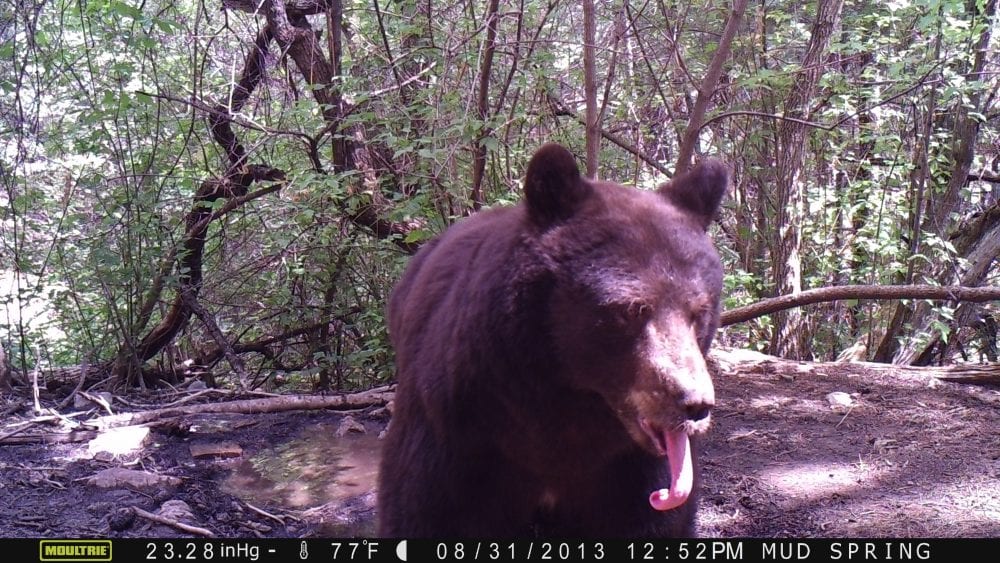
Speaking of heat, this graph shows what the air temperature was during bear visits (the cameras detect that, too). 60-64°F sounds like a nice cool time to take a hike over to a spring, doesn’t it? So even though bears are coming most often in some of the hottest months of the year, we’ve noticed that they seem to time their visits for when it is a bit cooler.
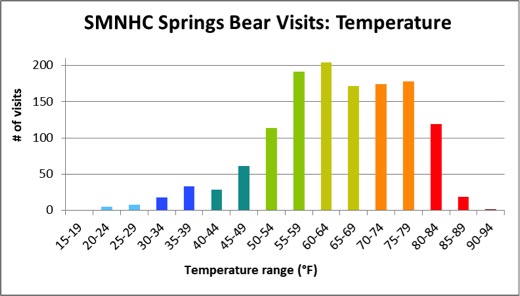
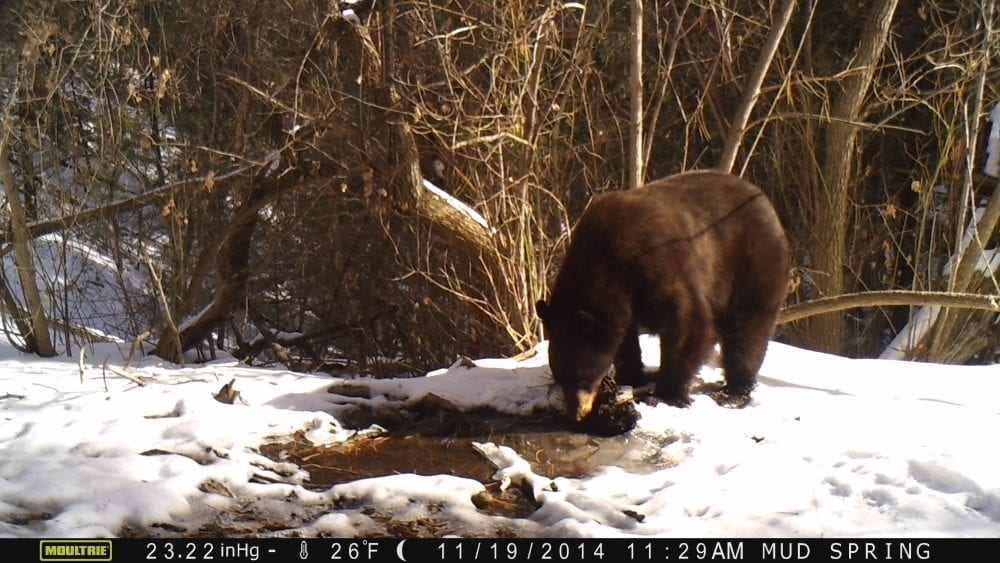
What time of day would you think bears like to come by the springs?
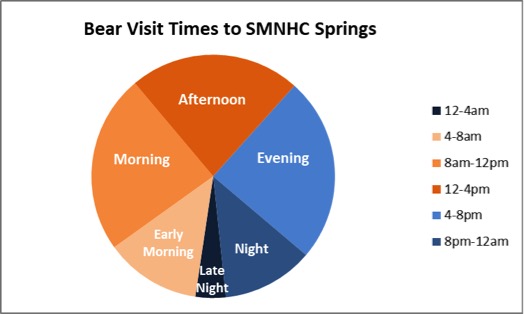
Turns out, they don’t seem to have much of a preference. Visits happen equally in morning, afternoon, and evening. Their least favorite time period is from midnight to 4 AM. I know I don’t like to wake up thirsty in the middle of the night!
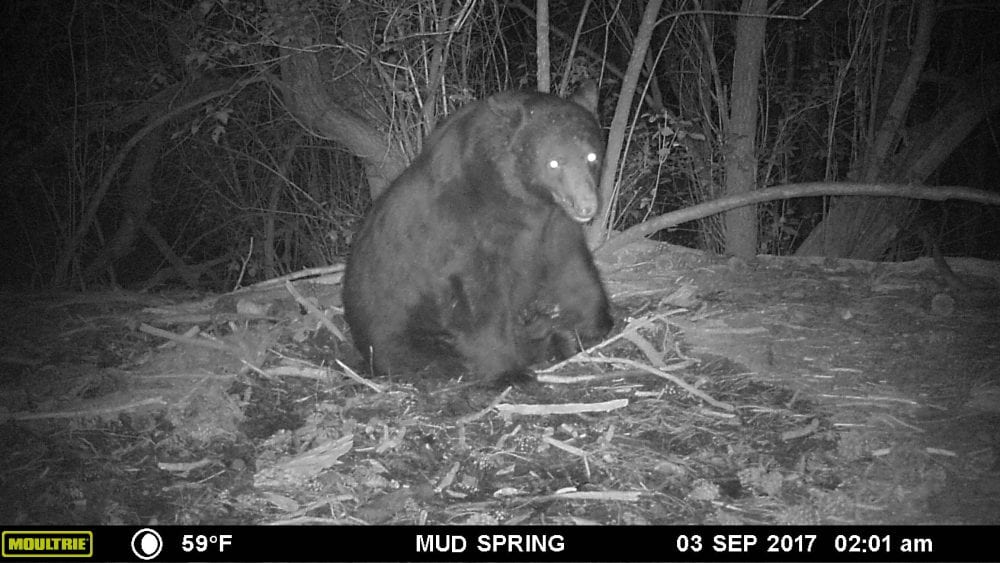
Climate change in New Mexico is causing worse and longer droughts, less snow each winter, and hotter temperatures that evaporate water and make animals thirstier, which means that the wildlife here are finding it harder and harder to get the water they need.
At Mud Spring, we witness the water level dropping a little each year, as the bears dig down to get to the wet spots and drink from a pool smaller than themselves. If we can work to slow the impacts of climate change more, we can help the bears, as well as the squirrels, deer, birds, skunks, bobcats, ringtails, coyotes, and mountain lions to survive.
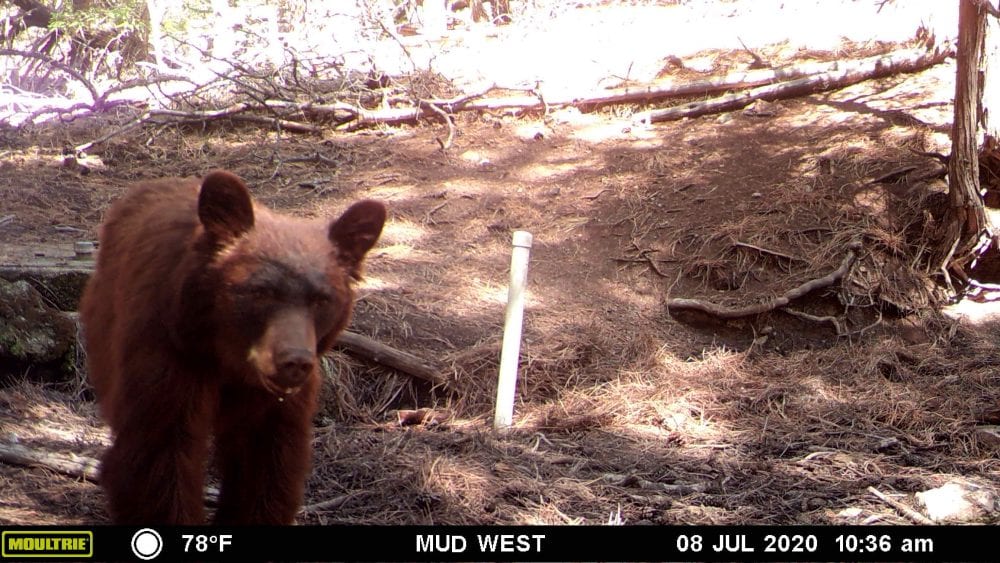
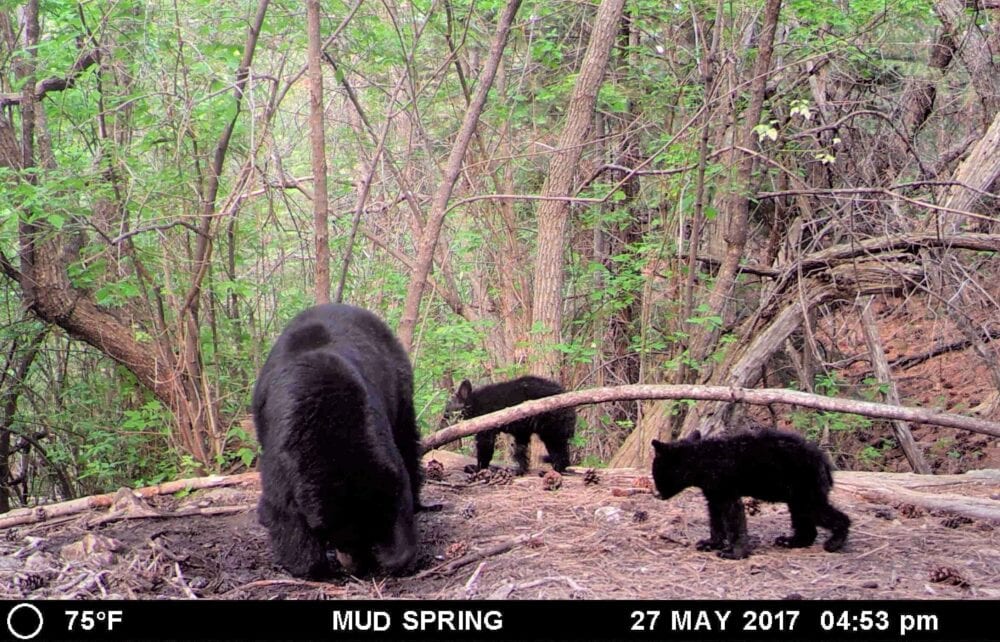
Here’s a video of all different species of wildlife that visited Mud Spring this spring:
Do you want to see more photos from the Sandia Mountain Natural History Center’s critter cameras? Check out this webpage.
The SMNHC is a joint partnership between Albuquerque Public Schools and the New Mexico Museum of Natural History and Science. For more information, visit their website.
